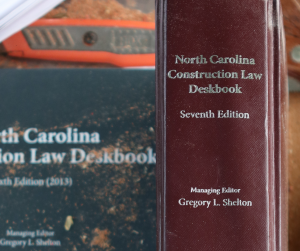The Dollars are in the Details
By: Gregory L. Shelton
Shelton Law Carolinas
I have been monitoring the advance sheets in South Carolina and North Carolina for an interesting case concerning federal contracting. Ask and you shall receive.
Hot off the presses, we have Stevens Aviation, Inc. v. DynCorp International, LLC, South Carolina Court of Appeals Case No. 4857, where a general contractor, DynCorp, and subcontractor, Stevens, joined forces under a Teaming Agreement to pursue a federal contract for maintenance of Army and Navy aircraft. The Teaming Agreement incorporated a “Statement of Work” attachment providing that Stevens would perform certain painting, inspection, and maintenance work on the aircraft.
The team won the contract, at which point they entered into a Subcontract. One of the recitals (the “whereas” clauses) in the Subcontract referred to the Teaming Agreement by name and date. At some point, DynCorp started using other subcontractors to perform what had been Stevens’ scope of work. Stevens sued DynCorp alleging that the Subcontract incorporated the terms of the Teaming Agreement, including the Statement of Work attachment, by reference. DynCorp argued that the Subcontract contained no terms of exclusivity such that DynCorp was bound to use Stevens for all the work.
Stevens’ prevailed at the trial court level, but the Court of Appeals reversed. The Court of Appeals first noted that recitals (“whereas” clauses in the subcontract preamble) do not constitute binding contractual language, and pointed to provisions in the subcontract where the parties incorporated specific provisions (including terms of the FAR) by expressly referring to the provisions. No such reference was made to the provisions of the Teaming Agreement relied upon by Stevens. The Court of Appeals then turned to language in the Subcontract providing that Stevens “shall provide all . . . services . . . at the direction of DynCorp.” The Court of Appeals concluded that DynCorp’s diversion of work to other subs did not constitute a breach of contract.
The result did not turn on what the parties or the Court thought was fair, or what the parties believed their agreement to be. Rather, the result turned on words and phrases, and where those words and phrases were located within the Subcontract.
Stop tossing the contract documents into the file cabinet once work begins. And start paying attention to the details.
Photo courtesy of Charleston Daily Photo.


